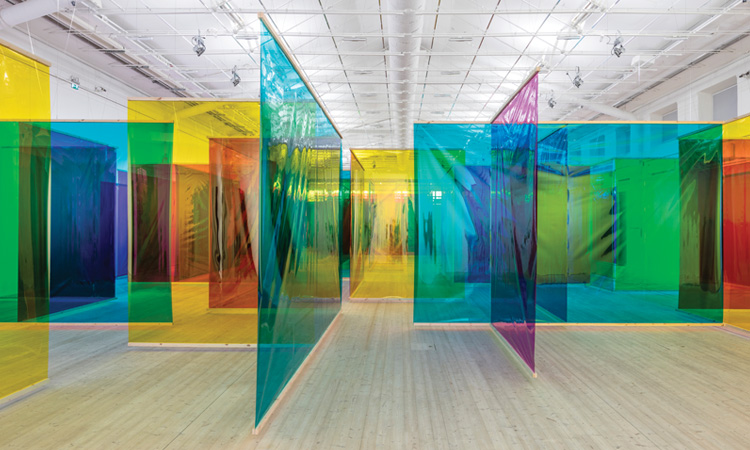 Seu Corpo da Obra (Your Body of Work) by Olafur Eliasson, on view at the Moderna Museet, Stockholm, Sweden, in 2015. Transparent sheets of colored plastic form spontaneous color compositions that continually change in response to a viewer’s movement through the space. [Photo by A.S. Berg / © 2011 Olafur Eliasson]
Seu Corpo da Obra (Your Body of Work) by Olafur Eliasson, on view at the Moderna Museet, Stockholm, Sweden, in 2015. Transparent sheets of colored plastic form spontaneous color compositions that continually change in response to a viewer’s movement through the space. [Photo by A.S. Berg / © 2011 Olafur Eliasson]
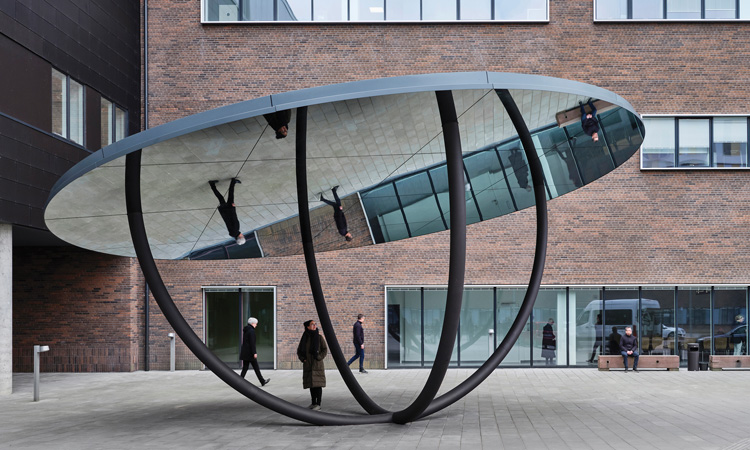 Det Lyttende Spejl (The Listening Mirror), Olafur Eliasson, Regionshospitalet Gødstrup, Herning, Denmark, 2021 [Photo by A.S. Berg / © 2021 Olafur Eliasson]
Det Lyttende Spejl (The Listening Mirror), Olafur Eliasson, Regionshospitalet Gødstrup, Herning, Denmark, 2021 [Photo by A.S. Berg / © 2021 Olafur Eliasson]
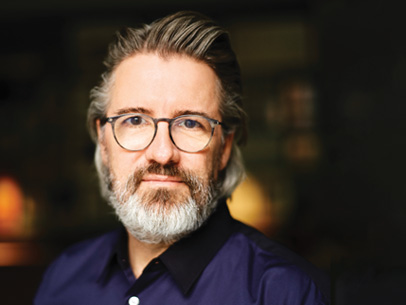 [Photo by L. Borges / © 2020 Olafur Eliasson]
[Photo by L. Borges / © 2020 Olafur Eliasson]
“We create much of the light by which we see the world, so we must also take an interest in what kind of light we see.”
—Olafur Eliasson
Olafur Eliasson
Olafur Eliasson is a Danish–Icelandic artist known for large-scale immersive light installations and works that typically focus on natural phenomena and social issues.
INSPIRATION: Much of Eliasson’s inspiration comes from childhood summers spent in Iceland, surrounded by nature. Eliasson remembers the first time he was conscious of light having an effect. It was during the oil crisis in Hafnarfjörður, Iceland. Due to oil rationing, the electricity went off every evening at seven o’clock. “For the first second or so everything was pitch black. Then the windows lit up, because as soon as your eyes got used to the light—the darkness, I mean—light seemed to appear in the windows. As my grandparents, brothers and I moved to sit by the blue evening light, I remember what I felt—it was appreciation.”
FEATURED ARTWORK: Det Lyttende Spejl (The Listening Mirror) is a mirrored pavillion in front of the regional hospital in Herning, Denmark. The underside of the pavillion reflects the semicircular pipes below, creating the illusion of two complete circles passing through the ceiling and rising into an imaginary space above, where visitors entering the pavilion can gaze up at their own reflection incorporated into the artwork.
FORWARD: In 2019, Eliasson was appointed Goodwill Ambassador for renewable energy and climate action by the United Nations Development Program. “We create much of the light by which we see the world,” Eliasson says. “So we must also take an interest in what kind of light we see.”
website: olafureliasson.net | instagram: studioolafureliasson
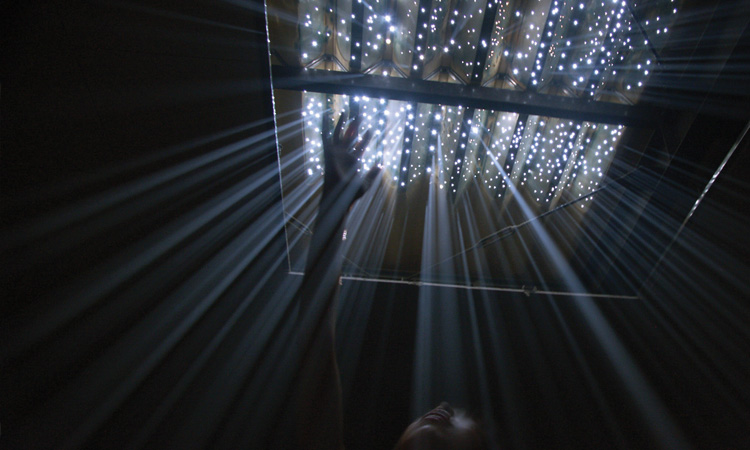 Brocken + Lay line, Yasuhiro Chida, Gallery Sora, Tokyo, Japan, 2008 [Photo by Y. Chida]
Brocken + Lay line, Yasuhiro Chida, Gallery Sora, Tokyo, Japan, 2008 [Photo by Y. Chida]
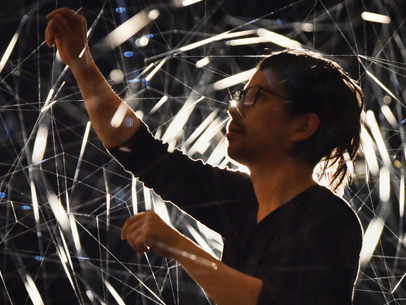 [Photo by F. Vinken / Center for International Light Art / Courtesy of Y. Chida]
[Photo by F. Vinken / Center for International Light Art / Courtesy of Y. Chida]
“It is almost as a coincidence, similar to the moment of a scientific discovery, that I discover something I wasn’t expecting and then the art begins to take shape.”
—Yasuhiro Chida
Yasuhiro Chida
Yasuhiro Chida is a Japanese artist whose art explores our sensory perception of the environment and how we react to changes within it, often incorporating the effects of natural light.
INSPIRATION: Chida’s inspiration comes from the process of creation. “It is almost as a coincidence, similar to the moment of a scientific discovery, that I discover something I wasn’t expecting and then the art begins to take shape.” Chida considers light “one of the purest materials that make it possible to perceive a space.”
FEATURED ARTWORK: The first Brocken was created for a final exhibit at a gallery that was soon to be dismantled. With deconstruction in mind, Chida aimed for a subtractive work. He began by making holes in the walls and ceiling. As light entered through the corn shaped holes in the walls, something special happened—the light appeared to follow him as he moved through the space and produced an effect of twinkling lights. Other installations of Brocken have had their own miracles. One particularly magical version, Brocken 6, in Nagano, Japan, was built over water. The water acted as a mirror, giving the viewer the feeling of floating in midair.
FORWARD: In Chida’s artwork Aftereal for the 2021 Fête des Lumières in Lyon, France, 100 vibrating fluorescent threads illuminated with UV lights lit up the dark with a large landscape of line drawings that were not actually there—showing “how reality as we experience it is an illusion we create with our own eyes or brain.”
Current light installation:
‘Pierres Numériques (Digital Stones),’ Constellations de Metz Festival, France, 23 June–3 September 2022
website: chidayasuhiro.com | instagram: chidayasuhiro
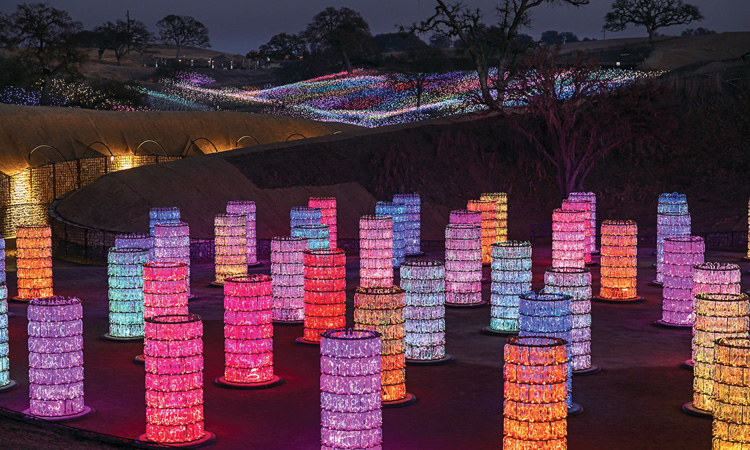 Light Towers, Bruce Munro, Sensorio, Paso Robles, CA, USA, 2021 [Photo by C. Hardy / © 2021 Bruce Munro / All rights reserved]
Light Towers, Bruce Munro, Sensorio, Paso Robles, CA, USA, 2021 [Photo by C. Hardy / © 2021 Bruce Munro / All rights reserved]
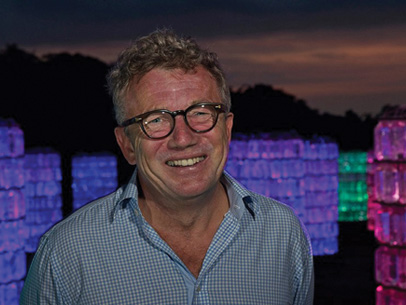 [Photo by M. Pickthall / © 2021 Bruce Munro / All rights reserved]
[Photo by M. Pickthall / © 2021 Bruce Munro / All rights reserved]
“The things I create during this moment, this short life, will soon be recycled and may be forgotten, but I hope they are relevant for the now and provide viewers with a sense of connection and positivity.”
—Bruce Munro
Bruce Munro
Bruce Munro is a British artist known for producing immersive light-based installations, often made up of thousands of components, creating an emotional response for the viewer.
INSPIRATION: Munro finds inspiration in fleeting moments of clarity, moments “where you know you are in sync with the world around you and therefore feel that the experience is worth trying to create in an artwork—to capture and share the sense of wonder or connection that one feels at the time.”
FEATURED ARTWORK: In Light Towers, 69 towers comprising 17,000 locally sourced wine bottles are illuminated with optical fibers that change color in response to the sounds, emanating from within, of Sunrise—a commissioned choral composition by Orlando Gough. Light Towers is based on a phenomenon known as color synesthesia that Munro read about in his 20s. In the Lyall Watson book The Gifts of Unknown Things, a young girl possesses the gift of seeing sounds in color. The book also refers to the Earth as having a “natural pulse” of 69 beats/day. The artwork reflects this magical combination of color and sound.
FORWARD: In 2017, Munro designed Infinite Possibilities for Optica’s Global HQ—a slow-moving LED light installation that produces an ever-changing spectrum. Munro creates his works with simple, reusable materials and the belief that art is most relevant to the era when it’s made. “The things I create during this moment, this short life, will soon be recycled and may be forgotten, but I hope they are relevant for the now and provide viewers with a sense of connection and positivity.”
Current light installations:
'From Sunrise Road' Heide Gallery, Melbourne, Australia, 25 June–16 October 2022
'Light' at Longwood Gardens, Kennett Square, PA, USA, 30 June–30 October 2022
'Mountain Lights' Hanazono, Niseko, Japan, 1 July–10 October 2022
'Field of Light' LBJ Wildflower Centre, Austin, TX, USA, opening 9 September 2022
website: brucemunro.co.uk | instagram: brucemunrostudio
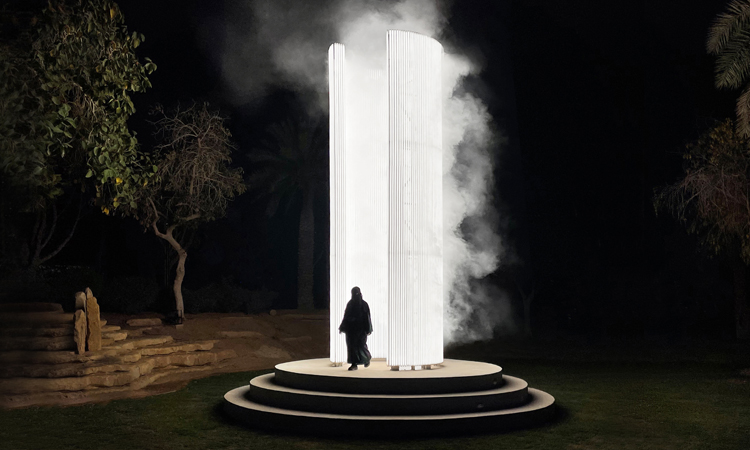 Beacon, Karolina Halatek, Riyadh, Saudi Arabia, 2021 [Photo courtesy of K. Halatek]
Beacon, Karolina Halatek, Riyadh, Saudi Arabia, 2021 [Photo courtesy of K. Halatek]
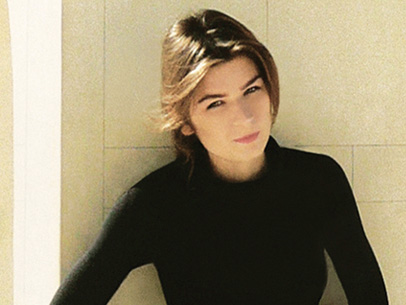 [Photo courtesy of K. Halatek]
[Photo courtesy of K. Halatek]
“In my work, I want to create a new reality and bring people into this rearranged sensual dimension, using very basic elements to create the shift.”
—Karolina Halatek
Karolina Halatek
Karolina Halatek is a Polish large-scale installation artist who creates experiential site-specific spaces using light as a key medium and incorporating visual, architectural and sculptural elements.
INSPIRATION: For Halatek, inspiration begins with an observation, which is then combined with an emotional connection to the experience, followed by a need to dig further. “Creativity is awakened in a moment of emotional response. You respond to something, then suddenly you want to know more and the creative process begins. You decide to be an artist, or a scientist, or whatever label, to find out more, to be closer to your observation.”
FEATURED ARTWORK: Halatek connects heaven and earth with Beacon, a large-scale sculptural light installation in Riyadh, Saudi Arabia. Made up of 272,160 LED lights, Beacon emits an immense brightness, attracting and inviting visitors to enter. Once inside, visitors find themselves in an illuminated space that is very personal and intimate. A fog adds a dynamic quality to the surrounding light and makes the space come alive. Visitors can also look up through the open center to the sky, seeing stars and connecting with the universe.
FORWARD: Halatek says, “In my work, I want to create a new reality and bring people into this rearranged sensual dimension, using very basic elements to create the shift. Minimal tools can be super powerful and can have a huge impact. I’m using new technologies but translating them into something very ancient—I would say even primal.”
Upcoming light installation:
‘Sensoria. The Art and Science of Our Senses,’ Łaźnia Center for Contemporary Art, Gdańsk, Poland, 16 September–30 October 2022
website: karolinahalatek.com | instagram: karolinahalatek
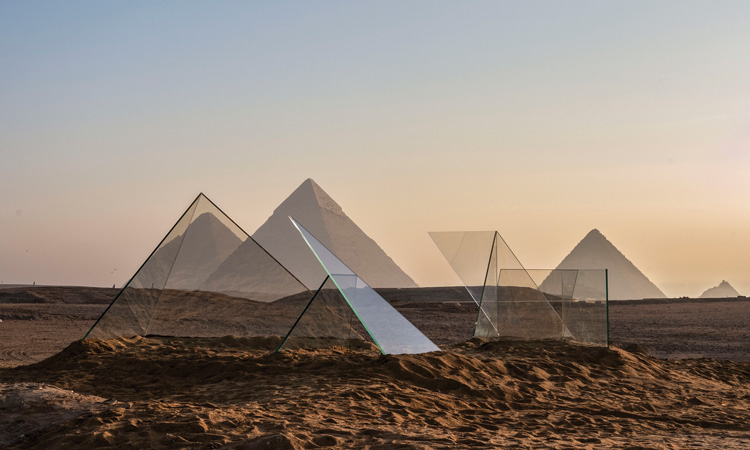 (Plan of the Path of Light) In the House of the Hidden Places, Shuster + Moseley, Great Pyramids of Giza, Egypt, 2021 [Photo by H. Alsaifi]
(Plan of the Path of Light) In the House of the Hidden Places, Shuster + Moseley, Great Pyramids of Giza, Egypt, 2021 [Photo by H. Alsaifi]
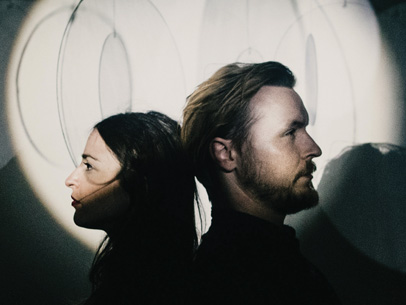 [Photo by K. Kritzler]
[Photo by K. Kritzler]
“We see how the light of consciousness can be opened, and how we can tune in to spectral dimensions of reality that are hidden in plain sight.”
—Claudia Moseley and Edward Shuster
Shuster + Moseley
Claudia Moseley and Edward Shuster are Britsh artists working with light, optics and geometry. Their work looks at our interaction with technology, using sculptural glass interfaces to mediate light, producing particular optical signatures or spectral qualities.
INSPIRATION: Shuster and Moseley find inspiration in the language of light, both as containing information about how the universe is structured and as a signifier for consciousness. “We see how reality is enframed by technology. How a network of lenses and screens filter and mediate the informational light we are exposed to. How the light of consciousness can be opened, and how we can tune in to spectral dimensions of reality that are hidden in plain sight.”
FEATURED ARTWORK: (Plan of the Path of Light) In the House of the Hidden Places was created for a 2021 exhibition of contemporary art presented at the Great Pyramids of Giza. The work consists of four large-scale glass sculptures (“Glyphs”) that take their form and measure from the special geometries within the Great Pyramids and alignment to particular celestial points. “The idea was to create a kind of optical clockwork that interfaces between the viewer and the cosmos, revealing a shifting paradigm of illuminated planes and optical projections.”
FORWARD: Shuster and Moseley are working on several permanent commissions, as well as developing new techniques “where we are translating spectroscopic data into specially configured multi-layered optical coatings that we are applying to our large glass forms through magnetron sputtering.”
website: shustermoseley.com | instagram: shuster_moseley
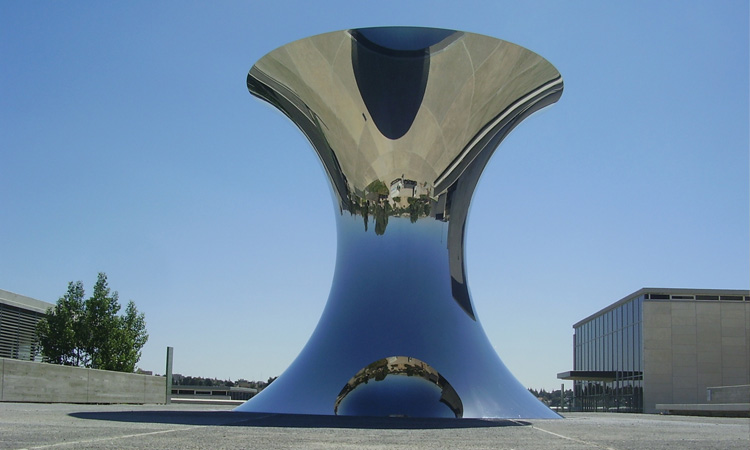 Turning the World Upside Down, Anish Kapoor, Israel Museum, Jerusalem, Israel, 2010 [Photo by A. Teicher / © Anish Kapoor. All Rights Reserved, DACS, London / ARS, NY 2022]
Turning the World Upside Down, Anish Kapoor, Israel Museum, Jerusalem, Israel, 2010 [Photo by A. Teicher / © Anish Kapoor. All Rights Reserved, DACS, London / ARS, NY 2022]
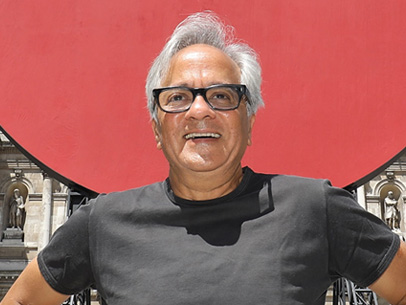 [Photo by T.P. Whitby / Stringer / Getty Images /© Anish Kapoor. All Rights Reserved, DACS, London / ARS, NY 2022]
[Photo by T.P. Whitby / Stringer / Getty Images /© Anish Kapoor. All Rights Reserved, DACS, London / ARS, NY 2022]
“In the end, I’m talking about myself. And thinking about making nothing, which I see as a void. But then that’s something, even though it really is nothing.”
—Sir Anish Kapoor
Sir Anish Kapoor
Sir Anish Kapoor is a British-Indian artist and sculptor known for his highly reflective works of polished stainless steel that manipulate form and space to reflect or distort the viewer and their surroundings.
INSPIRATION: Many of Kapoor’s early works were explorations of matter and non-matter—sculptures that seemed to recede into the distance, disappear into the ground or distort the space around them. These works often alluded to dualities, like earth-sky, matter-spirit, lightness-darkness, visible-invisible, conscious-unconscious, male-female and body-mind. “In the end, I’m talking about myself. And thinking about making nothing, which I see as a void. But then that’s something, even though it really is nothing.”
FEATURED ARTWORK: Turning the World Upside Down is an hourglass-shaped, polished stainless steel sculpture located at the highest point on the grounds of the Israel Museum in Jerusalem, Israel. The highly reflective surface of the sculpture acts as a giant mirror, reversing what is reflected on its surface—literally turning the world upside down with the sky below and the landscape above, and inviting contemplation of the meaning of space and time.
FORWARD: In 2014, Kapoor began working with Vantablack, which is thought to be one of the least reflective known substances. Vantablack S-VIS, also called the “blackest black,” is a sprayable paint that uses randomly-aligned carbon nanotubes and has high absorption only at visible wavelengths—allowing Kapoor to create “darkness,” or what we would see without light.
website: anishkapoor.com | instagram: anish.kapoor
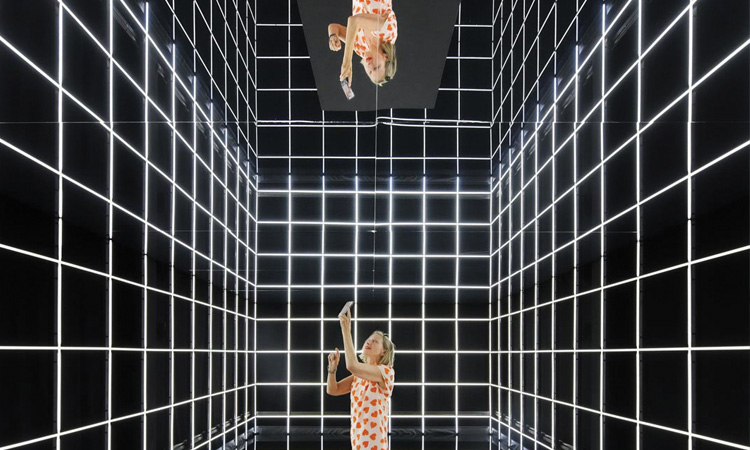 Light High – On the Verge of Perception, Jacqueline Hen, Center for International Light Art, Unna, Germany, 2019 [Photo by F. Vinken / Center for International Light Art / Courtesy of J. Hen]
Light High – On the Verge of Perception, Jacqueline Hen, Center for International Light Art, Unna, Germany, 2019 [Photo by F. Vinken / Center for International Light Art / Courtesy of J. Hen]
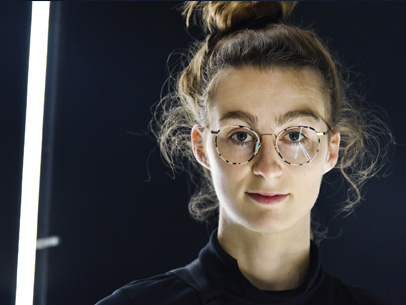 [Photo by F. Vinken / Center for International Light Art / Courtesy of J. Hen]
[Photo by F. Vinken / Center for International Light Art / Courtesy of J. Hen]
“When creating an artwork, I aspire to create a moment of irritation—a slight glitch where normal perception of space and reality might be questioned.”
—Jacqueline Hen
Jacqueline Hen
Jacqueline Hen is a German artist and spatial designer working on largescale performative installations. Her work investigates the possibilities of social transformation through communication and participation in the intersection of physical and virtual habitats.
INSPIRATION: Hen finds inspiration in everyday life by observing common phenomena, like reflection from a light. She says, “When creating an artwork, I aspire to create a moment of irritation—a slight glitch where normal perception of space and reality might be questioned. For me, light is an excellent medium to create these moments, because it lets you shape the attention in a space.”
FEATURED ARTWORK: The installation Light High – On the Verge of Perception aims to guide perception through targeted visual and acoustic phenomena into border areas, where ambivalent experiences set in and the normal experience of space is abolished, resulting in a feeling of endless falling. A mirrored ceiling, together with a thin reflecting surface of water on the ground and a grid arrangement of lights, create the spatial illusion of an infinite vertical space of light and darkness. To enhance the illusion of infinity, the visual flow is complemented by the acoustic dimension of the rising and falling sound of a shepherd’s scale.
FORWARD: At the Academy of Media Arts, Cologne, Germany, Hen and two fellow assistant professors run the “exMedia Lab,” which fosters transdisciplinary experiments and discourse at the intersection of bioart, design, electronics, printing techniques, coding and material investigations.
website: jacquelinehen.de | instagram: jacqueline_hen
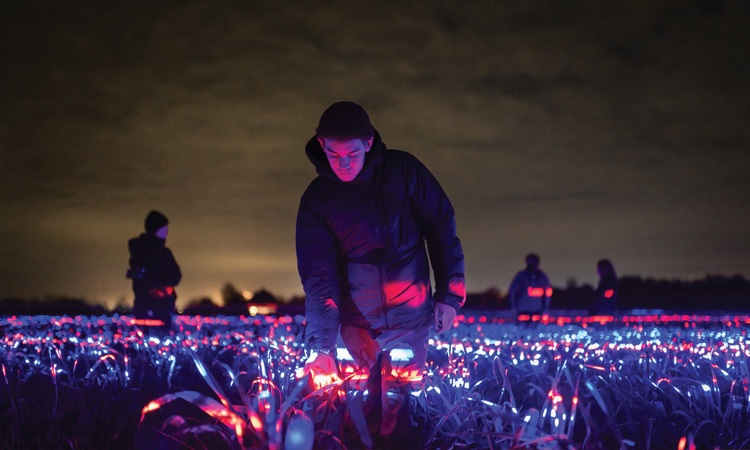 Grow, Daan Roosegaarde, Flevoland, Netherlands, 2021 [Photo © Daan Roosegaarde]
Grow, Daan Roosegaarde, Flevoland, Netherlands, 2021 [Photo © Daan Roosegaarde]
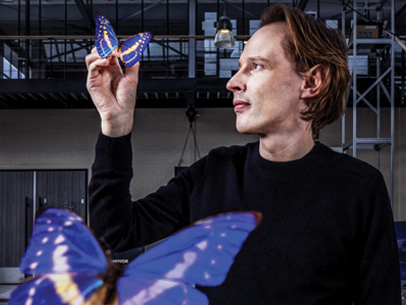 [Photo © Daan Roosegaarde]
[Photo © Daan Roosegaarde]
“Grow is the dreamscape that shows the beauty of light and sustainability—not as a utopia, but as a protopia, improving step by step.”
—Daan Roosegaarde
Daan Roosegaarde
Daan Roosegaarde is a Dutch artist whose projects often employ light design and sensing technology in an interactive manner. In 2007, he founded Studio Roosegaarde, in Rotterdam, Netherlands. He conceived of the studio, also called The Dream Factory, as a social design lab.
INSPIRATION: Roosegaarde often finds inspiration in nature. “I look at the wings of butterflies. Artificial pigments tend to fade, but the coloring on these wings does not. On a nano-level, the wings manipulate their source light, which is why the color always remains very vivid.”
FEATURED ARTWORK: Grow is a design-based light recipe that shines vertically across 20,000 m2 of organically farmed leeks. The “dancing lights” across the field are inspired by photobiology technologies, which have shown that certain recipes of blue, red and ultraviolet light can enhance plant growth and reduce pesticide use by up to 50%. For Roosegaarde, “Grow is the dreamscape that shows the beauty of light and sustainability—not as a utopia, but as a protopia, improving step by step.”
FORWARD: Organic fireworks, Spark Bilbao, illuminated Bilbao-Biscay, Spain, as part of a new sustainable celebration at the Wellbeing Summit for Social Change, 1–3 June 2022. Roosegaarde became inspired by the magical light of fireflies and the desire to update the ritual of fireworks. This resulted in “a poetic performance of thousands of biodegradable light sparks which organically float through the air—inviting visitors to wonder and reflect.”
website: studioroosegaarde.net | instagram: daanroosegaarde
Alessia H. Kirkland is OPN's creative director.
